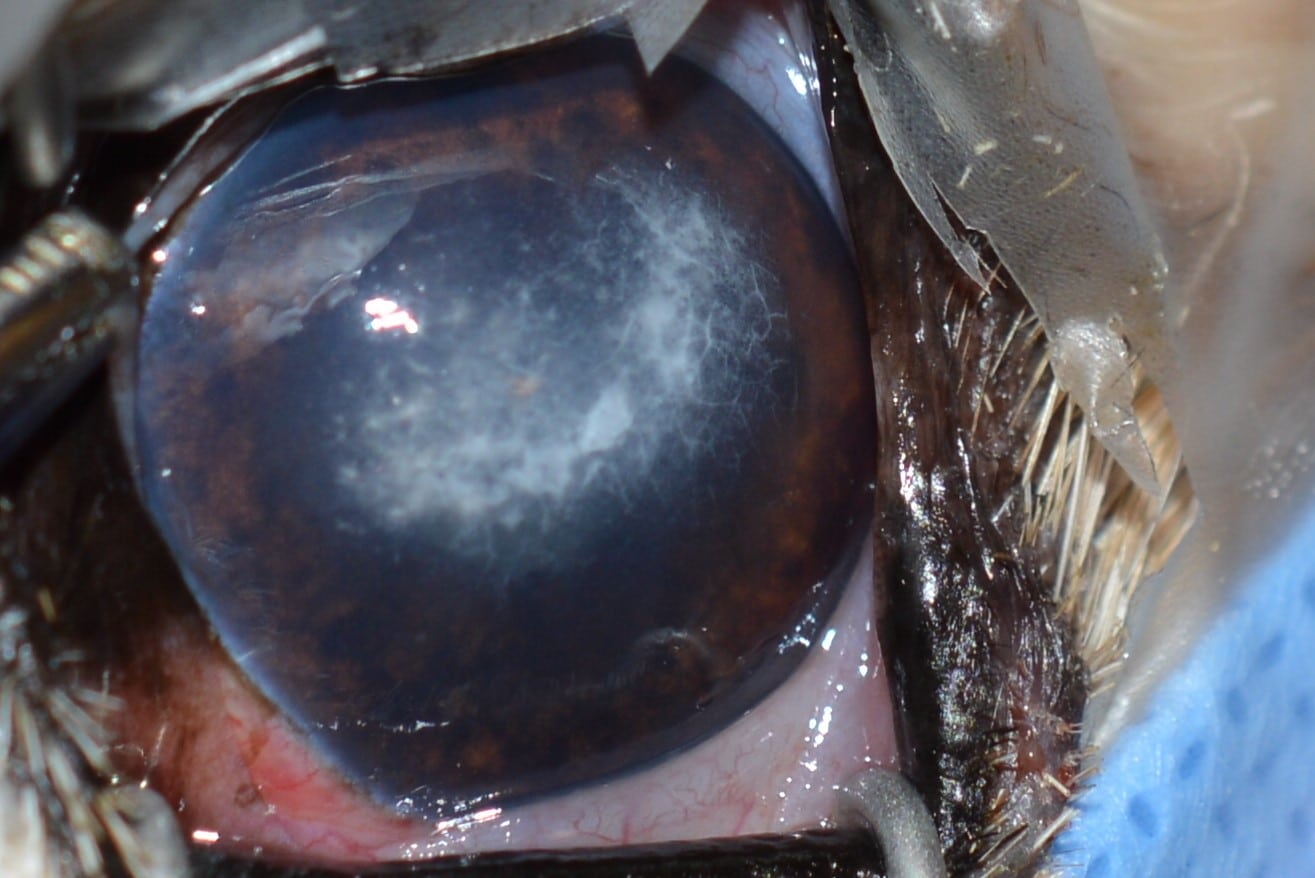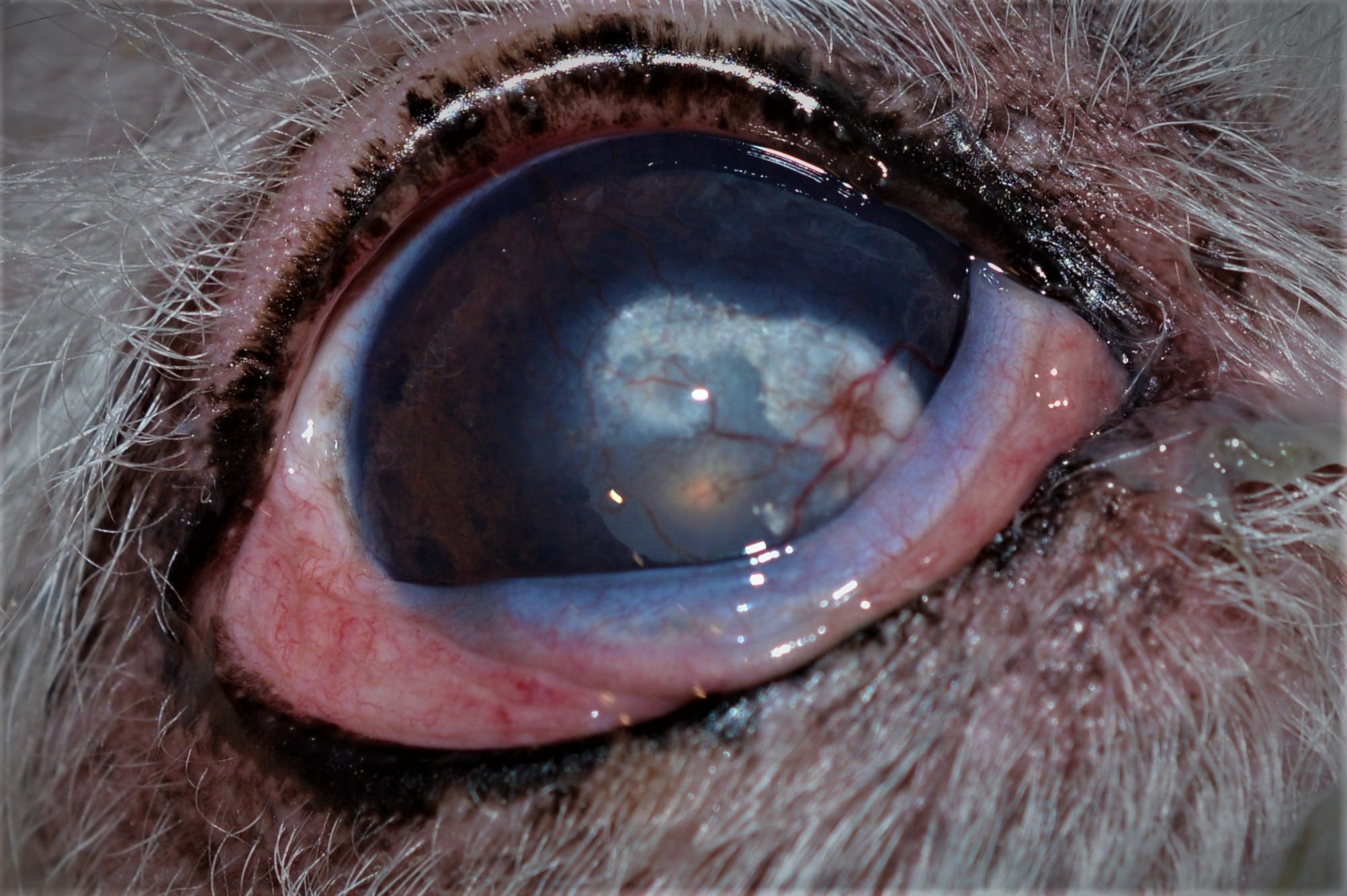Pet Corneal Mineral Dystrophy
Corneal mineral dystrophy/degeneration is a disease that results in the formation of white opacities of the cornea.
What are the clinical signs of corneal mineral dystrophy/degeneration?
In corneal mineral dystrophy, the lesions tend to present as circular, white lesions that form in the central cornea. The degree of opacity is limited, and they tend not to progress. Corneal mineral dystrophy rarely causes a notable decrease in vision or becomes painful.
Corneal mineral degeneration develops as white lesions of varying size and location. Corneal mineral degeneration is typically more opaque. Corneal mineral degeneration can progress to the point of obstructing vision or resulting in continual ulceration of the overlying corneal tissue. In these cases, redness of the conjunctiva, squinting, ocular discharge, and obvious cavitation of the cornea are noted. Complications associated with corneal mineral degeneration commonly manifest in older patients but can develop in middle age and rarely in young dogs.


What are the causes of corneal mineral dystrophy/degeneration?
Corneal mineral dystrophy is a primary disease of the metabolism of the corneal cells. Corneal mineral degeneration develops secondary to underlying conditions. Causes of corneal mineral degeneration include chronic corneal ulceration, hormonal abnormalities (especially Cushing’s disease), chronic topical steroid use, and changes in corneal cell metabolism associated with aging.
What are the treatments for corneal mineral dystrophy/degeneration?
Since corneal mineral dystrophy is self-limiting and mild, treatment is usually not indicated. Milder forms of corneal mineral degeneration can be treated with topical medications in an attempt to halt the progress of the mineral deposition. In cases in which the mineral has progressed to the point of affecting vision or causing pain, surgical removal of the affected cornea via a keratectomy can be performed.
